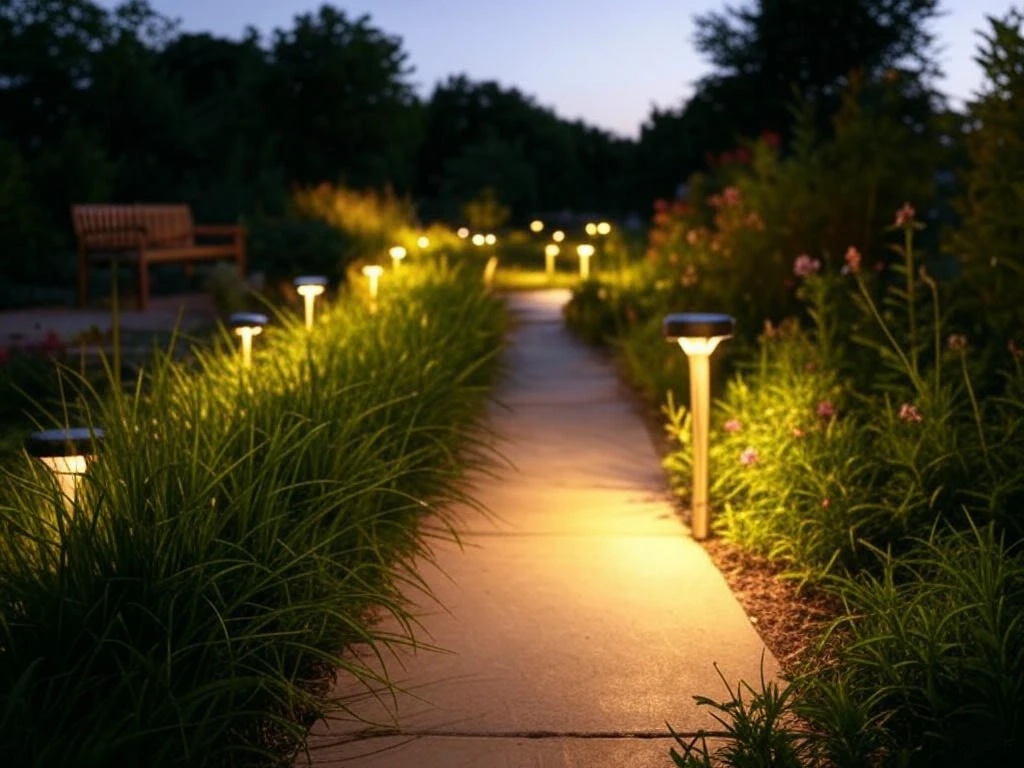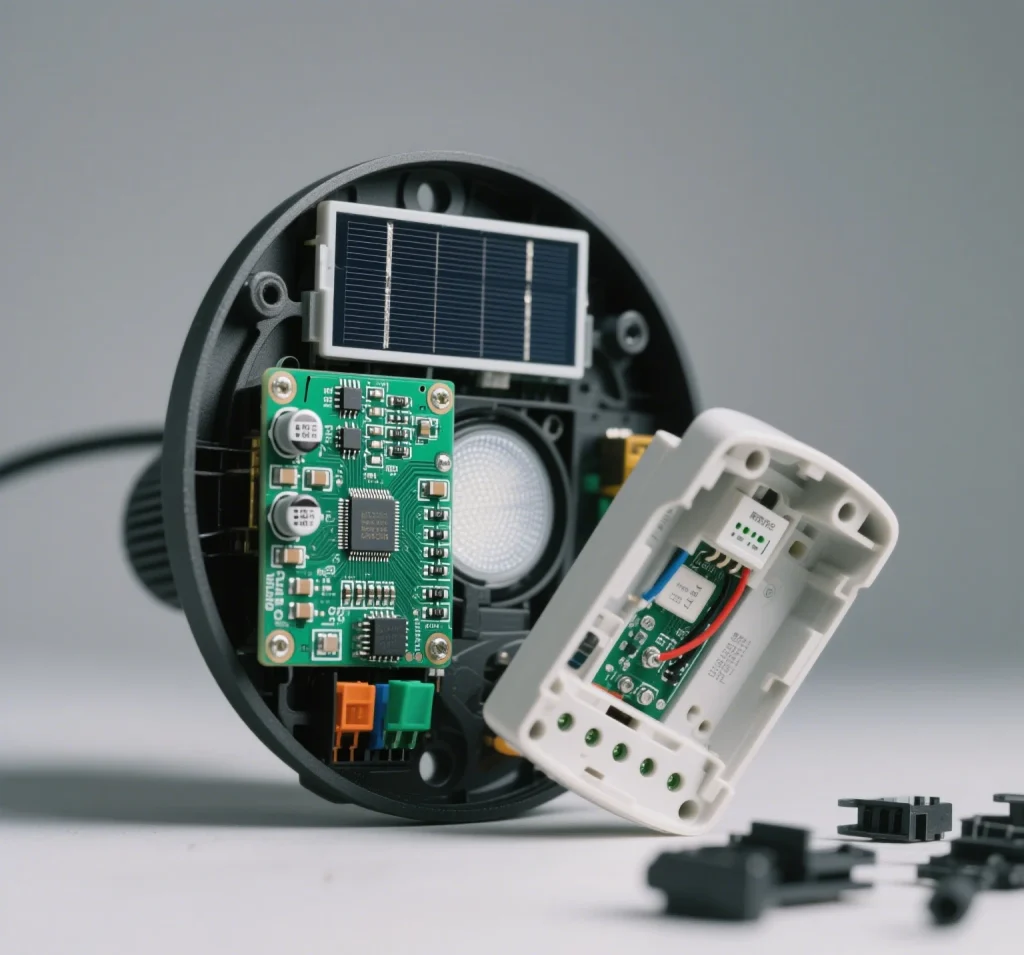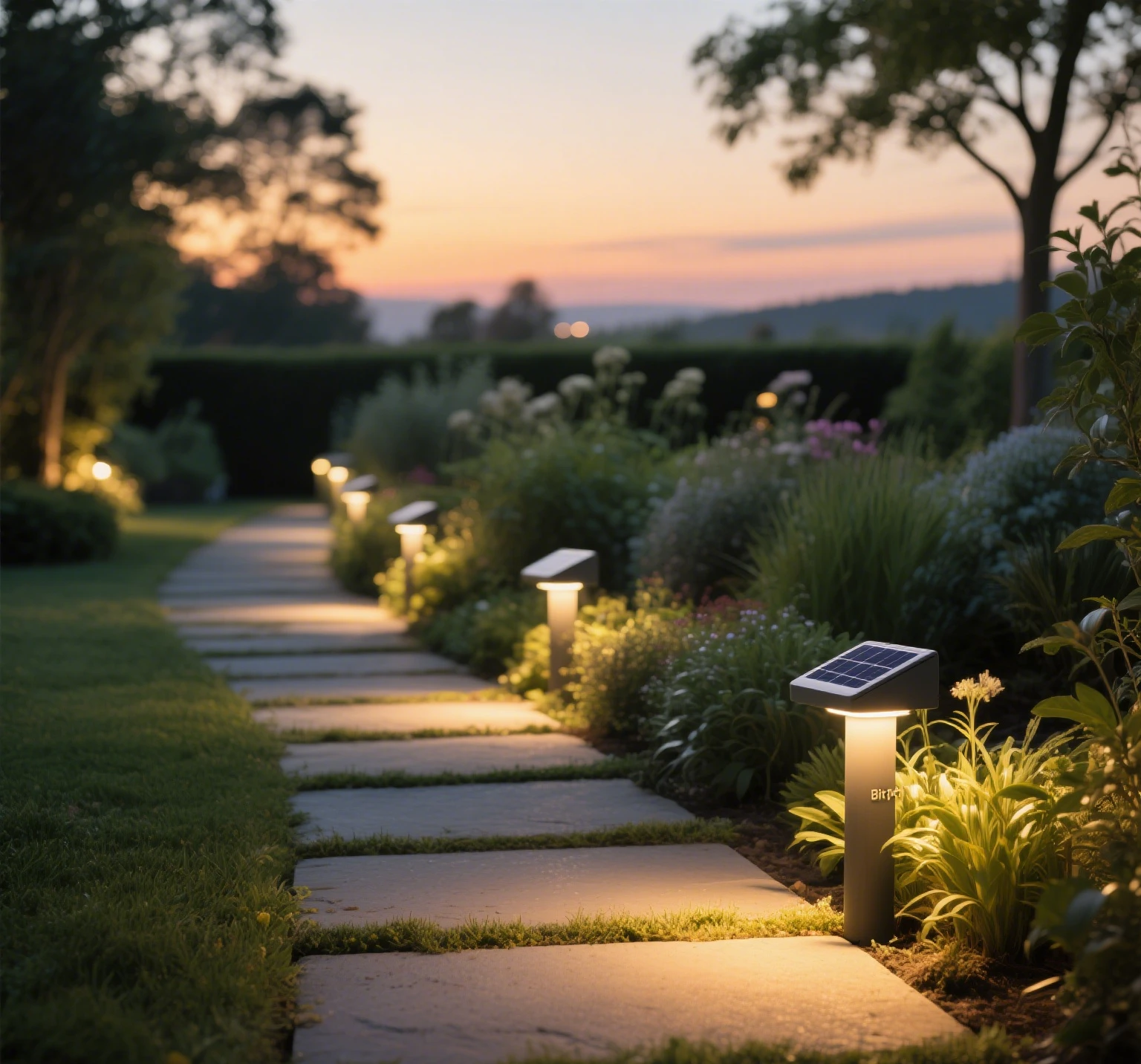Outdoor solar lighting is a go-to for brightening up a garden, courtyard, or public spaces without the hassle of wiring or high energy bills. But when you’re leaving these lights out in the rain, sun, or snow, it’s fair to wonder if they can handle the elements long-term. The good news? With the right specs and care, solar lights can be tough as nails. This article breaks down what makes outdoor solar lighting durable, from waterproof ratings to maintenance tips, so you can pick lights that stand the test of time.

Decoding Waterproof and Dustproof Ratings
When shopping for outdoor solar lighting, you’ll see terms like IP65 or IP67 tossed around. These IP ratings (Ingress Protection) tell you how well a light resists water and dust, which is critical for long-term outdoor stability. But what do the numbers mean?
- First digit (dust): Ranges from 0-6, showing how dustproof the light is. A 6 means total dust protection, perfect for dusty public spaces.
- Second digit (water): Ranges from 0-8, indicating water resistance. A 5 handles splashes or rain; a 7 can survive being submerged briefly.
- Examples: IP65 means dust-tight and resistant to water jets, great for a garden. IP67 goes further, handling temporary submersion, ideal for courtyards near water features.
To understand product specs, check the IP rating on the box or manual. Higher numbers mean better protection, but for most outdoor uses, IP65 or IP67 is plenty for waterproof and dustproof levels.
Does Sun Exposure Hurt Battery Life or Materials?
Prolonged sun exposure is a reality for outdoor solar lighting, especially in sunny climates. The question is whether constant UV rays will degrade the battery lifespan or housing materials.
- Battery impact: Most solar lights use lithium-ion or NiMH batteries. UV itself doesn’t directly harm them, but high heat (above 104°F/40°C) from prolonged sun exposure can shorten battery lifespan by 20-30% over a few years.
- Housing durability: Quality materials like ABS plastic, stainless steel, or tempered glass hold up well. Cheaper plastics might fade or crack after 1-2 years of intense sun.
- Mitigation: Look for UV-resistant coatings or materials in the product specs. Some lights also have thermal management to keep batteries cooler.
For a garden or courtyard, choosing lights with robust housing materials can extend their life significantly, even under relentless sunlight.
Performance in Extreme Temperature Swings
In regions with large temperature swings—think hot summers and freezing winters—solar lights face extra stress. Performance in extreme climates depends on the light’s design and materials.
- Cold weather: Lithium-ion batteries lose efficiency below 32°F (0°C), potentially reducing runtime by 10-20%. NiMH batteries fare slightly better in the cold.
- Hot weather: High temperatures can degrade battery lifespan and cause plastic housing to warp if it’s low-quality.
- Adaptable designs: High-end lights use temperature-resistant batteries and housing materials like aluminum or polycarbonate to handle swings from -4°F to 122°F (-20°C to 50°C).
For public spaces in climates with big seasonal shifts, like the Midwest or northern Europe, prioritize lights with specs that confirm performance in extreme climates. Check for temperature range ratings in the product description.
How Often Should You Maintain Outdoor Solar Lights?
Outdoor maintenance frequency and necessity depend on your environment and the light’s quality. While solar lights are mostly set-and-forget, a little care goes a long way for durability and long-term outdoor stability.

Maintenance tips:
- Clean the panels: Dust, dirt, or bird droppings can cut charging efficiency by 10-20%. Wipe panels with a damp cloth every 2-3 months, or monthly in dusty public spaces.
- Check for damage: Inspect for cracked housing or loose parts after storms. Replace damaged components to maintain waterproof and dustproof levels.
- Battery care: If runtime drops after a couple of years, the battery might need replacing. Check if the model allows battery swaps.
- Reposition seasonally: In a garden or courtyard, adjust panel angles to catch more sun, especially in winter when sunlight is weaker.
For most setups, maintenance every 3-6 months is enough. In harsher environments—like coastal areas with salt air—monthly checks help ensure long-term outdoor stability.
Why Quality Matters for Outdoor Durability
Not all solar lights are created equal. High-quality models with strong protective ratings and quality materials are built to last in tough conditions, whether in a garden, courtyard, or public spaces.
What sets them apart:
- Robust IP ratings: IP65 or IP67 ensures protection against rain, dust, and even brief submersion.
- Durable materials: Stainless steel, tempered glass, or UV-resistant plastics withstand prolonged sun exposure and large temperature swings.
- Smart design: Features like replaceable batteries or thermal protection boost longevity.
A cheap light might save you a few bucks upfront but could fail after one rough season. Investing in quality materials means fewer replacements and better performance in extreme climates.
Choosing the Right Solar Light for Longevity
To ensure your outdoor solar lighting lasts, focus on specs that scream durability. Here’s what to prioritize:
- Protective rating: Go for IP65 or higher for reliable waterproof and dustproof levels.
- Housing materials: Choose stainless steel, aluminum, or UV-resistant plastics for resistance to prolonged sun exposure.
- Battery quality: Look for high-capacity (2000mAh+) lithium-ion or NiMH batteries with a rated lifespan of 2-3 years.
- Temperature tolerance: Check for a wide operating range (e.g., -4°F to 122°F) to handle large temperature swings.
- Warranty: A 1-2 year warranty signals confidence in long-term outdoor stability.
Brands like BioLite, Gama Sonic, or Philips often deliver on these fronts. Check reviews for real-world feedback on how lights hold up in gardens or public spaces.
Handling Specific Outdoor Challenges
Different environments pose unique challenges for outdoor solar lighting. Here’s how to address them:
- Coastal areas: Salt air can corrode metal. Opt for stainless steel or high-grade plastic housing and check IP67 ratings for extra protection.
- Desert climates: Prolonged sun exposure and heat demand UV-resistant materials and batteries with thermal protection.
- Snowy regions: Large temperature swings and snow buildup require IP65+ ratings and regular panel cleaning to maintain charging efficiency.
Tailoring your choice to your specific climate ensures better performance and less frequent outdoor maintenance frequency.
Conclusion: Solar Lights Can Thrive Outdoors
Outdoor solar lighting can absolutely stand up to the elements in a garden, courtyard, or public spaces, as long as you choose wisely. A solid protective rating like IP65 or IP67 ensures waterproof and dustproof levels, while quality materials guard against prolonged sun exposure and large temperature swings. Regular upkeep, like cleaning panels and checking for damage, keeps performance in extreme climates strong. By picking lights with high-quality batteries and durable housing, you’re set for long-term outdoor stability—no matter what Mother Nature throws your way.


Leave a Reply